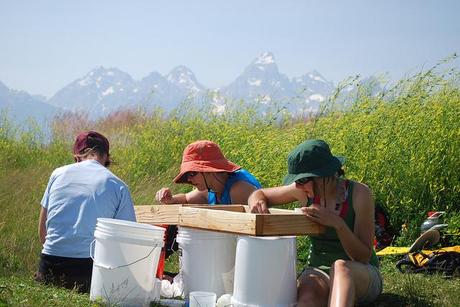What is Environmental Science?
Environmental science is the academic field that takes physical, biological and chemical sciences to study the environment and discover solutions to environmental problems. Sciences used in environmental science include geography, zoology, physics, ecology, oceanology, and geology. Environmental science also branches out into environmental studies and environmental engineering. It provides integrated and interdisciplinary approach to the study of environmental problems.
- Environmental studies are the study of social sciences to understand human interactions with the environment.
- Environmental engineering is the focus on analyzing and deducing problems with the environment and the effect of man-made programs on the environment, and for finding solutions to help protect and preserve the environment by disposing of pollution in the air, water, and land.
Environmental science involves different fields of study. Most often, the study of environmental science includes the study of climate change, natural resources, energy, pollution, and environmental issues. In environmental sciences, ecologists study how plants and animals interact with each other, chemists study the living and non-living components of the environment, geologists study the formation, structure and history of earth, biologists study the biodiversity, Physicists are involved in thermodynamics, computer scientists are involved in technical innovations and computer modelling and biomedical experts study the impact of environmental issues on our health and social lives.
The growing complexity of environmental problems are creating a need for scientists with rigorous, interdisciplinary training in environmental science. Environmental scientists and specialists use their knowledge of the natural sciences to protect the environment and human health. They must have a solid background in economics, sociology and political science.

Components of Environmental Science
Ecology
Ecology is the study of organisms and the environment interacting with one another. Ecologists, who make up a part of environmental scientists, try to find relations between the status of the environment and the population of a particular species within that environment, and if there is any correlations to be drawn between the two. For example, ecologists might take the populations of a particular type of bird with the status of the part of the Amazon Rainforest that population is living in.
The ecologists will study and may or may not come to the conclusion that the bird population is increasing or decreasing as a result of air pollution in the rainforest. They may also take multiple species of birds and see if they can find any relation to one another, allowing the scientists to come to a conclusion if the habitat is suitable or not for that species to live in.
Geoscience
Geoscience concerns the study of geology, soil science, volcanoes, and the Earth’s crust as they relate to the environment. As an example, scientists may study the erosion of the Earth’s surface in a particular area. Soil scientists, physicists, biologists, and geomorphologists would all take part in the study.
Geomorphologists would study the movement of solid particles (sediments), biologists would study the impacts of the study to the plants and animals of the immediate environment, physicists would study the light transmission changes in the water causing the erosion, and the soil scientists would make the final calculations on the flow of the water when it infiltrates the soil to full capacity causing the erosion in the first place.
Atmospheric Science
Atmospheric science is the study of the Earth’s atmosphere. It analyzes the relation of the Earth’s atmosphere to the atmospheres of other systems. This encompasses a wide variety of scientific studies relating to space, astrology and the Earth’s atmosphere: meteorology, pollution, gas emissions, and airborne contaminants.
An example of atmospheric science is where physicists study atmospheric circulation of a part of the atmosphere, chemists would study the chemicals existent in this part and their relationships with the environment, meteorologists study the dynamics of the atmosphere, and biologists study how the plants and animals are affected and their relationship with the environment.
Environmental Chemistry
Environmental Chemistry is the study of the changes chemicals make in the environment, such as contamination of the soil, pollution of the water, degradation of chemicals, and the transport of chemicals upon the plants and animals of the immediate environment. An example of environmental chemistry would be introduction of a chemical object into an environment, in which chemists would then study the chemical bonding to the soil or sand of the environment. Biologists would then study the now chemically induced soil to see its relationship with the plants and animals of the environment.
Environmental science is an active and growing part of the scientific world accelerated by the need to address problems with the Earth’s environment. It encompasses multiple scientific fields and sciences to see how all interchange and relate with one another in any of the above four components.

